If you book the Construction Game for your team building or as a team outing then this is the task your team will face:
Designing, building and using a large water course (Aqueduct) that stands in an (imaginary) swamp and can make the water flow.
This is ultimate challenge for teams (20 participants or more) if you like a large and complex construction task. This will include a system with game elements and a competition!
Final: which Aqueduct is the best?
All this happens under considerable time pressure, because after a certain amount of time, the “tap” opens and water finally flows through the pipe.
Which team will fill the big barrel first? And how much money is left after the settlement; what is the balance of bonus points and penalty points?
This team program can be organized in 1.5 or 2.5 hours.
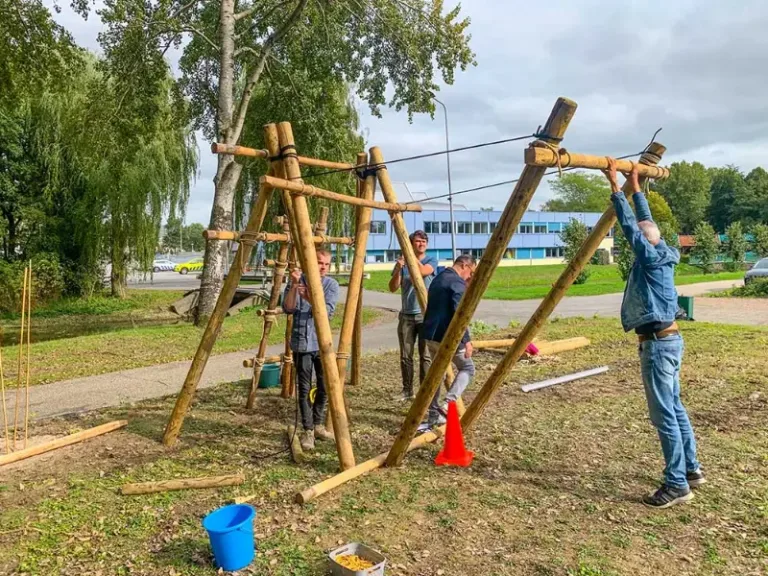
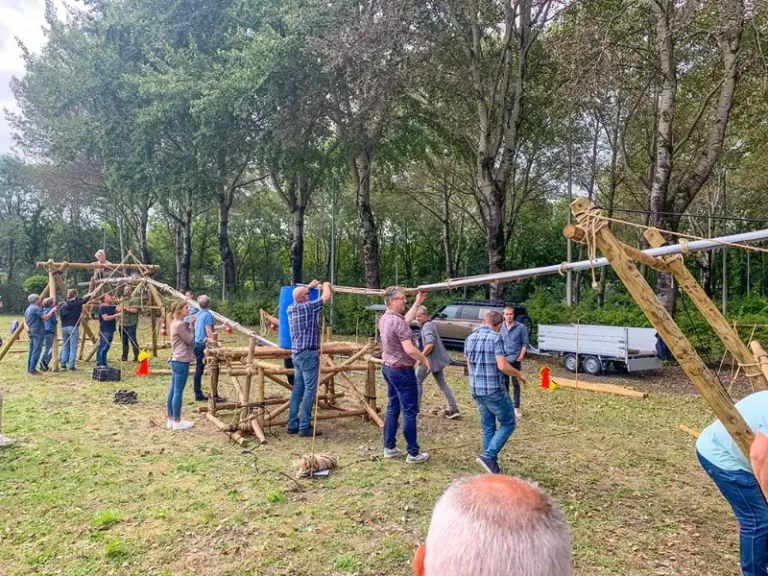
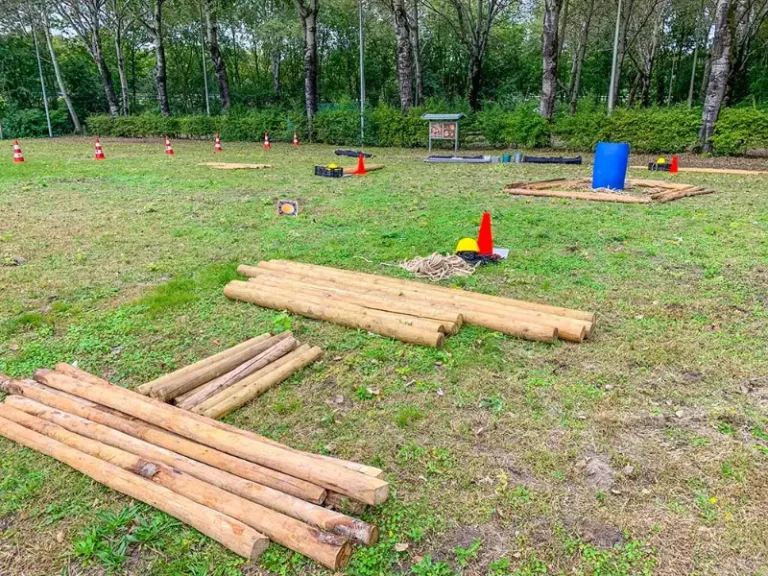
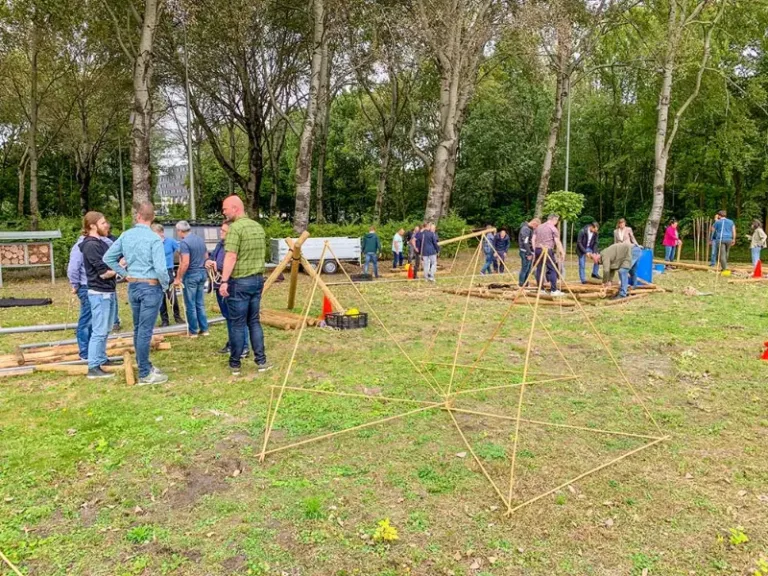
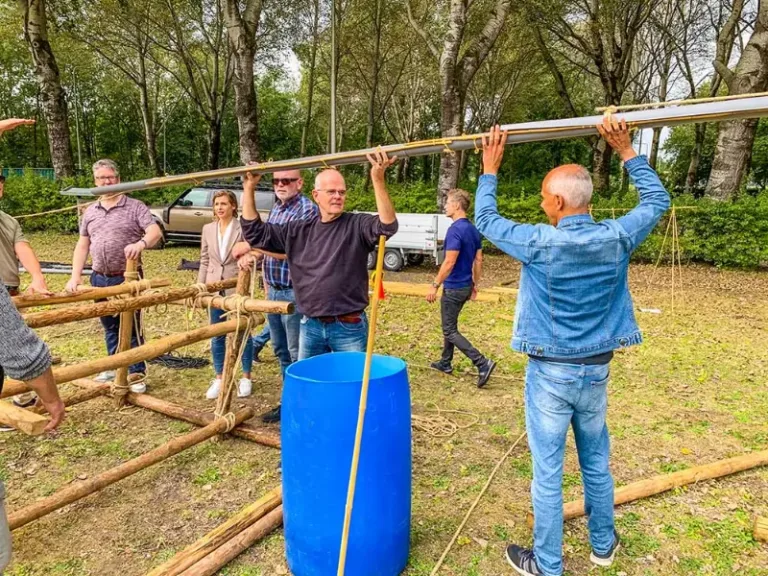
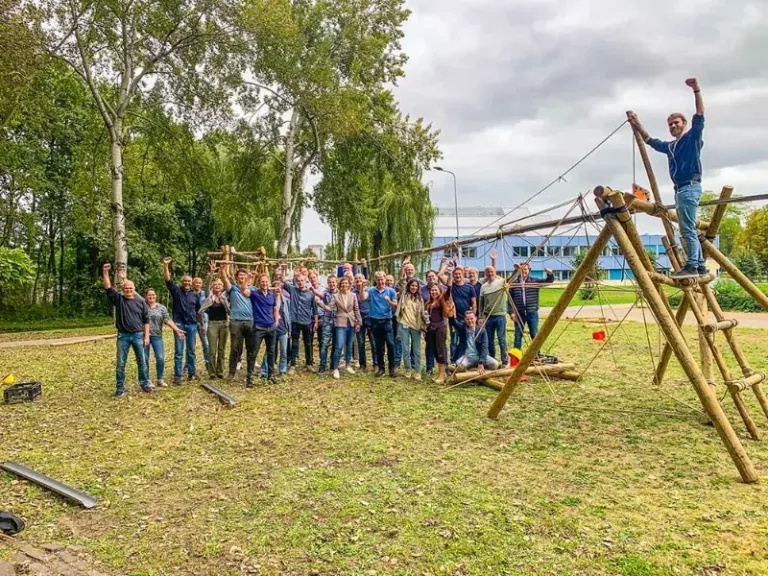
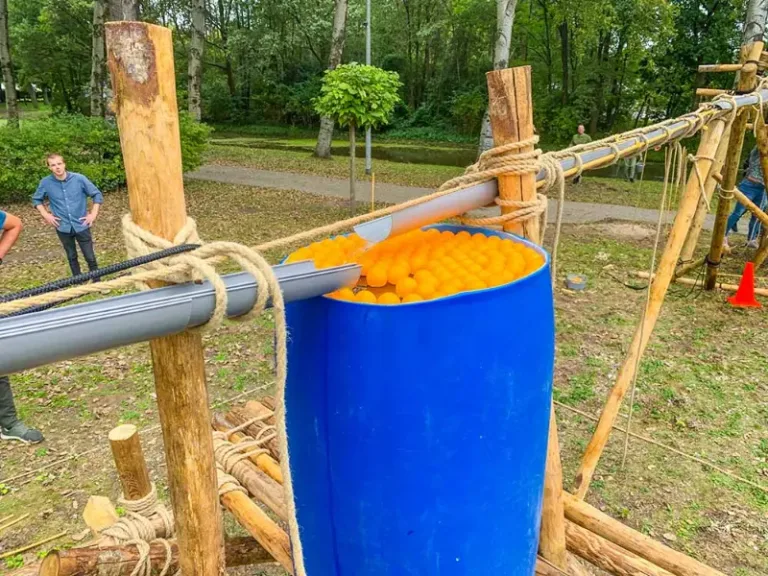
Which team role do you grab?
What does collaboration with your merger partner look like?
Which part of the Aqueduct does your team build? And then how does this connect to the other half?
After merging the teams and linking the structures, the battle really erupts in the final game!
In the Construction Game, we assume teams of 5 to 8 people. Each team works separately on an assignment. At some point, the subprojects are linked together and 2 teams merge into 1 superteam. Here we play with the balance between independence and dependence.
Team members are given specific team roles in the organization and execution of the project:
Team roles with tasks and certain rights
A complete team consists of the following team roles:
The leader: this team member is the coordinator of the process and responsible for time; he/she may set 1 x Time-Out for joint consultation with the merger partner.
The designer: armed with pencil, the designer is the draftsman of the structure.
The spokesperson: this team member is the only one who can communicate with the spokesperson of the team to be merged with.
The specialist: this team member is the only one allowed to leave the site to look at the other site.
The logistics professional/professional: takes the lead in building and executing the plan; may be the only one shopping for additional materials.
All participants receive a helmet. You write the team role you receive on the sticker that is then placed on the helmet.
DISC or another model? It is possible to divide the team roles based on the characterizations of the DISC behavioral styles or other models.
With the proper use of all the qualities and materials the team possesses, build half of a water course on site 1.
The other team (that you work with), builds the other half of the Aqueduct on site 2, without you being able to see each other.
Both teams have a basic set of materials. If you think you need additional materials, you can buy them at the “SHOP” (which is only open at set times). Or you can try to trade stuff with another team….
The structures made at the two construction sites will eventually be transported to and combined at the final site to form 1 large Aqueduct 15 or perhaps 25 meters in length.
The question is whether the structure has enough distance to cross the swamp and allow water to flow into the barrels. Which team will be the first to fill the big barrel with water? And how much “money” will be left in the greenhouse?
Based on this, a winner can be declared!
Learning and development with this game?
It is also possible to reduce the competition element somewhat and focus mainly on cooperation.
Outdoor and also indoor organization
For example, in winter we can organize this program indoors. Then the water is replaced by, for example, ping pong balls or toy cars.
Short, powerful workshops to get to know each other better
Content, energy and (inter-)action in every team building activity
Organizable anywhere and accessible to everyone
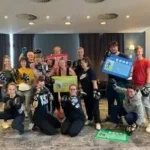


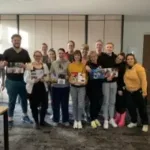
Let's begin
Together we explore your team's strengths and dynamics; what do you value?
In imagining the ideal future, we ask each other the question: what do you desire?
Then we develop a program with success factors for developing your potential
We accomplish this with workshops that connect and can create positive change.